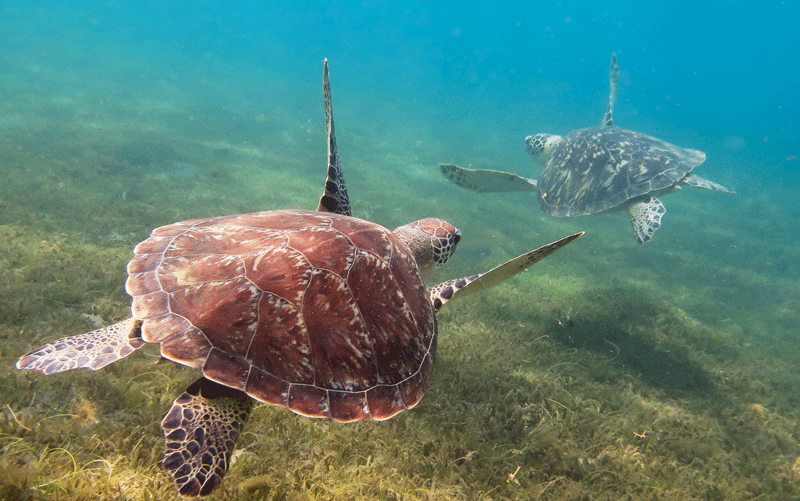Discovery of plastic in turtles
Researchers have discovered a number of large pieces of plastic in the guts of dead sea turtles found in the Eastern Mediterranean. Some of these plastic items include bottle caps and a Halloween toy in the shape of a witch's finger.
Study team and location
A team led by the University of Exeter and the Northern Cyprus Society for the Protection of Turtles (SPOT) examined 135 sea turtles (Caretta caretta) that had died in Northern Cyprus. This area has several nesting and feeding sites on its beaches. According to the study, many sea turtle deaths in the area are due to bycatch and entanglements also occur that can be related to interactions with fisheries.
Methodology and main findings
The researchers collected dead sea turtles from 2012 to 2022 and examined their guts for debris, including macroplastics, or pieces of plastic larger than 5 millimeters.
In total, the researchers found 492 pieces of macroplastic in 42.7% of the turtles, and an individual turtle contained 67 of those pieces of macroplastic. They published their findings in the journal Marine Pollution Bulletin.
Characteristics of the found plastics
In general, ingested plastic pieces tended to be rectangular, sheet-like, hard or foamy in texture and clear or white in color. The most common types of macroplastics found were polypropylene, polyethylene and polyamide. Researchers also recorded finds of plastic-like debris, including elastic and rubber. In a turtle, they found a witch finger toy made of rubber.
Comments from researchers
Emily Duncan, from the Center for Ecology and Conservation at the University of Exeter's Penryn Campus, said: "The journey of that Halloween toy – from a child's costume to the inside of a sea turtle – is a fascinating glimpse into the life cycle of plastic. These turtles feed on gelatinous prey such as jellyfish and seabed prey such as crustaceans, and it is easy to see how this item could have looked like a crab claw."
The importance of the study
According to the study authors, these findings may further support sea turtles as a bioindicator species, although more studies are needed. A bioindicator species is one that detects changes in the health of an environment, such as the oft-cited example of a canary in a coal mine.
Brendan Godley, a professor at the University of Exeter who leads Exeter's marine research group, explained: "Much larger sample sizes will be needed for whiting to be an effective 'bioindicator' species, and we we recommend that studies also include green turtles – allowing a more comprehensive picture to be gathered.”






